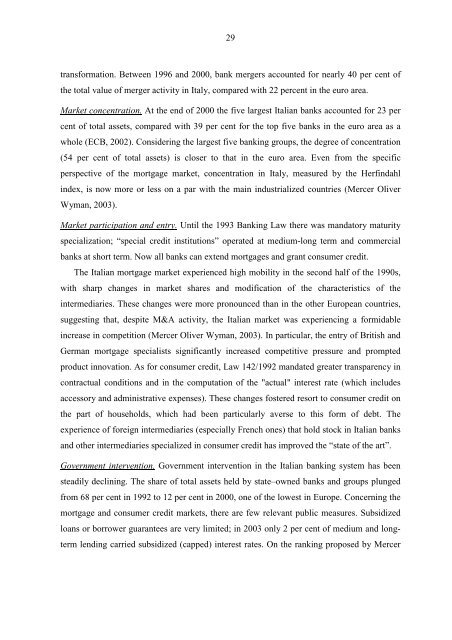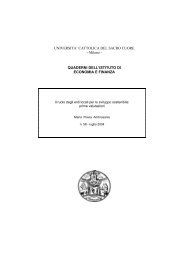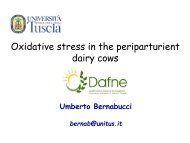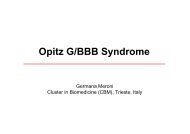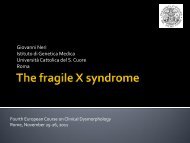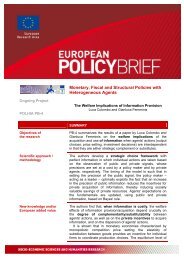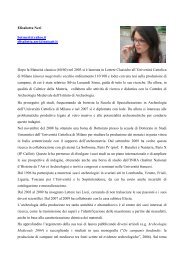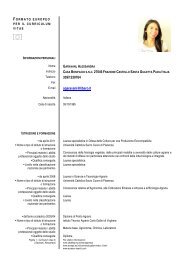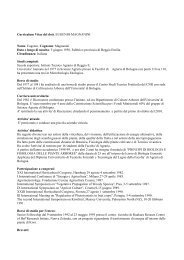REGULATION, FORMAL AND INFORMAL ... - ResearchGate
REGULATION, FORMAL AND INFORMAL ... - ResearchGate
REGULATION, FORMAL AND INFORMAL ... - ResearchGate
Create successful ePaper yourself
Turn your PDF publications into a flip-book with our unique Google optimized e-Paper software.
29<br />
transformation. Between 1996 and 2000, bank mergers accounted for nearly 40 per cent of<br />
the total value of merger activity in Italy, compared with 22 percent in the euro area.<br />
Market concentration. At the end of 2000 the five largest Italian banks accounted for 23 per<br />
cent of total assets, compared with 39 per cent for the top five banks in the euro area as a<br />
whole (ECB, 2002). Considering the largest five banking groups, the degree of concentration<br />
(54 per cent of total assets) is closer to that in the euro area. Even from the specific<br />
perspective of the mortgage market, concentration in Italy, measured by the Herfindahl<br />
index, is now more or less on a par with the main industrialized countries (Mercer Oliver<br />
Wyman, 2003).<br />
Market participation and entry. Until the 1993 Banking Law there was mandatory maturity<br />
specialization; “special credit institutions” operated at medium-long term and commercial<br />
banks at short term. Now all banks can extend mortgages and grant consumer credit.<br />
The Italian mortgage market experienced high mobility in the second half of the 1990s,<br />
with sharp changes in market shares and modification of the characteristics of the<br />
intermediaries. These changes were more pronounced than in the other European countries,<br />
suggesting that, despite M&A activity, the Italian market was experiencing a formidable<br />
increase in competition (Mercer Oliver Wyman, 2003). In particular, the entry of British and<br />
German mortgage specialists significantly increased competitive pressure and prompted<br />
product innovation. As for consumer credit, Law 142/1992 mandated greater transparency in<br />
contractual conditions and in the computation of the "actual" interest rate (which includes<br />
accessory and administrative expenses). These changes fostered resort to consumer credit on<br />
the part of households, which had been particularly averse to this form of debt. The<br />
experience of foreign intermediaries (especially French ones) that hold stock in Italian banks<br />
and other intermediaries specialized in consumer credit has improved the “state of the art”.<br />
Government intervention. Government intervention in the Italian banking system has been<br />
steadily declining. The share of total assets held by state–owned banks and groups plunged<br />
from 68 per cent in 1992 to 12 per cent in 2000, one of the lowest in Europe. Concerning the<br />
mortgage and consumer credit markets, there are few relevant public measures. Subsidized<br />
loans or borrower guarantees are very limited; in 2003 only 2 per cent of medium and longterm<br />
lending carried subsidized (capped) interest rates. On the ranking proposed by Mercer


